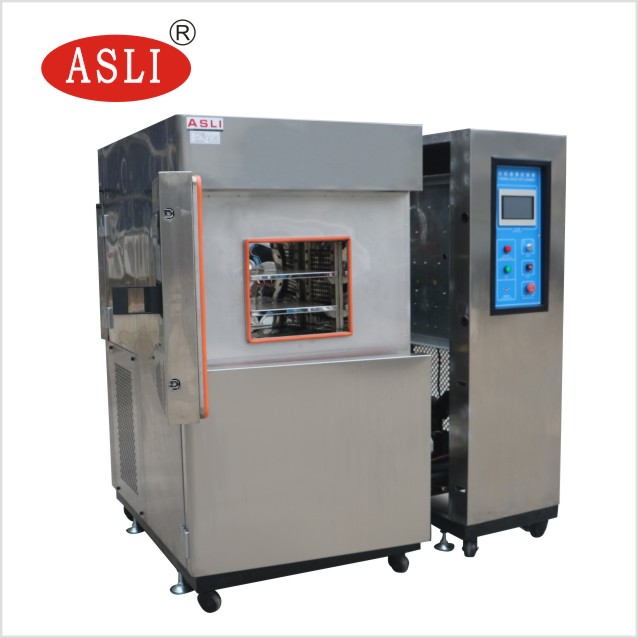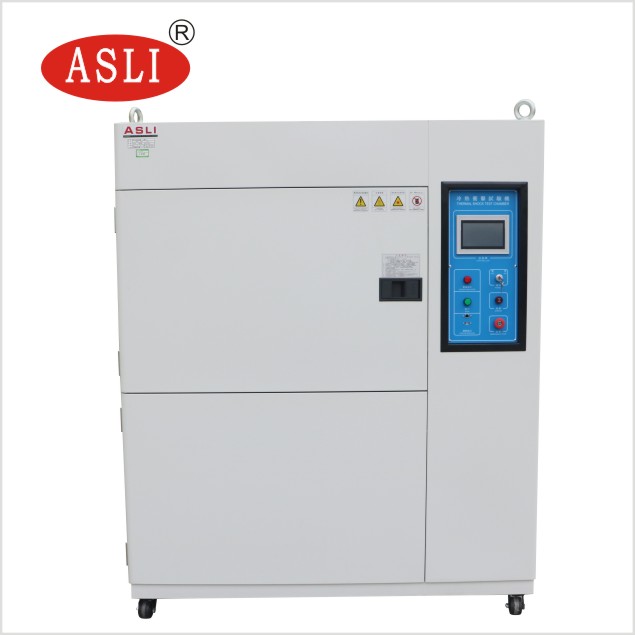Thermal shock testing, as discussed in the comprehensive guide by Asli Testing Equipment, serves as a vital process to evaluate the robustness of materials exposed to sudden and extreme temperature changes. This method is essential for industries where materials are expected to endure harsh environments, such as aerospace and automotive sectors. The guide details various testing techniques like air-to-air and liquid-to-liquid transitions, emphasizing their significance in predicting product performance and longevity. Understanding these methodologies can provide insights into how materials will behave in real-world scenarios, potentially saving costs on future damages and reinforcing consumer trust in product quality. What remains to be seen is how these practices are specifically adapted across different industries to meet unique environmental challenges.
Thermal shock testing is an essential evaluation method that assesses the resilience and reliability of materials and products when exposed to rapid temperature fluctuations. This process simulates the extreme conditions that materials might encounter during various phases such as usage, transportation, or storage. By subjecting the specimens to abrupt changes between high and low temperatures, the test methods aim to reveal inherent weaknesses or potential defects that could lead to material failure.
The methodology behind thermal shock testing is rigorously structured to ensure precision and relevance. Specimens are alternately exposed to varying thermal environments, forcing materials to undergo rapid expansions and contractions. This cycle can cause stress points that result in structural weaknesses, thereby identifying materials that might fail under real-world conditions.
By detecting these vulnerabilities early, manufacturers can enhance product designs, improve quality, and ensure safety. This form of testing is crucial for industries where materials are expected to withstand harsh environments. It provides a controlled yet aggressive scenario to push the material to its limits, offering valuable insights into its long-term durability and stability.
Through thermal shock testing, stakeholders maintain control over product performance, minimizing the risk of failure in critical applications.
Understanding the purpose of thermal shock testing further underscores its value in the development and maintenance of reliable products. This testing process is crucial for determining how different materials and assemblies will respond to rapid temperature variations that they might encounter during normal usage or while in transit. Such extreme conditions can cause materials to shatter, bind, crack, or damage internal components, leading to product failures that are costly and detrimental to brand reputation.
By carefully designing test procedures and regularly calibrating equipment, manufacturers can precisely simulate these harsh conditions and assess the robustness of their products. This proactive approach ensures that only the most durable and reliable products reach the market.
Here is a concise overview of the impacts of thermal shock testing:
| Potential Damage | Impact on Product Quality |
|---|---|
| Shattering | Compromises structural integrity |
| Binding | Affects mechanical function |
| Cracking | Reduces lifespan and aesthetics |
| Damage to internal components | Leads to operational failures |
Recognizing the benefits of thermal shock testing is essential for manufacturers aiming to produce robust and durable products. This testing method exposes materials and products to abrupt temperature changes, effectively simulating real-world environmental conditions. By doing so, it helps in identifying weaknesses that could lead to product failure, such as cracks, fractures, or delamination caused by thermal stress.
These insights are critical for ensuring that the product will perform reliably under stressful conditions.
Furthermore, thermal shock testing assists in the optimization of material selection. It provides valuable data on how different materials react to extreme temperatures, aiding manufacturers in choosing the right materials that can withstand such stress without degrading.
This is crucial not only for product durability but also for maintaining safety standards and minimizing the risk of malfunction in critical applications.
Given its capacity to evaluate the robustness of materials under extreme conditions, thermal shock testing is extensively utilized across various industries. This testing method is critical in industries where material performance can affect safety, reliability, and regulatory compliance.
| Industry | Application Example |
|---|---|
| Aerospace | Testing components for aircraft subjected to extreme altitude variations |
| Automotive | Ensuring the reliability of automotive electronics in severe weather conditions |
| Defense | Evaluating the durability of materials used in military equipment under varying environmental conditions |
| Consumer Electronics | Assessing the resilience of devices like smartphones and laptops against sudden temperature changes |
| Medical | Ensuring medical devices can operate effectively in different climatic conditions |
In aerospace applications, the integrity of components must withstand the dramatic temperature shifts experienced during flight. Similarly, in the automotive sector, electronics such as GPS systems and engine components must endure the thermal extremes of both operating and ambient conditions. The ability to withstand these conditions ensures that aerospace structures and automotive electronics maintain their functionality and safety in critical situations.



Thermal shock testing, a critical method for assessing material durability under extreme conditions, is categorized into several types based on the specific needs of different industries.
Air-to-air thermal shock testing employs rapid temperature shifts between two air-cooled chambers, utilizing a mechanical transfer system for swift product movement. This method is pivotal in evaluating electronic components, aerospace parts, and automotive products, offering rapid temperature transitions essential for precise thermal stress evaluation.
The liquid-to-liquid thermal shock test, more aggressive than its air-to-air counterpart, immerses products in alternating hot and cold liquid baths. This test is particularly effective in uncovering microcracks and material defects under severe thermal stress, making it indispensable in the semiconductor and automotive industries.
In the cold thermal shock test, products face extreme low temperatures to assess their endurance against freezing conditions, crucial for materials used in aerospace and military applications.
Lastly, thermal shock testing for connectors focuses on the reliability of electrical connectors under sudden temperature changes, ensuring their performance and structural integrity remain uncompromised.
Each of these testing types utilizes specialized thermal shock mechanisms and testing equipment designed to simulate real-world conditions, providing invaluable insights into material behavior and resilience.
The duration of a typical thermal shock test can span from mere seconds to an eternity, depending on specific testing procedures and control requirements. Test duration is crucial for simulating harsh, real-world environmental conditions effectively.
Thermal shock testing, when properly controlled, can be safe for electronic components, enhancing electronic reliability by assessing their resilience to extreme temperature changes and mitigating potential thermal shock effects in real-world applications.
Thermal shock tests, though robust, have inherent limitations and cannot replicate every facet of environmental variability. They provide valuable insights but should be part of a broader strategy to fully control environmental condition simulations.
The costs of conducting a thermal shock test involve purchasing or renting testing equipment, operational expenses such as energy consumption, and potential maintenance. A detailed cost analysis helps in budgeting and resource allocation for effective control.
Thermal shock testing, evoking the unpredictable forces of nature, critically assesses material durability, potentially influencing warranty implications. Manufacturers might adjust warranties based on how materials withstand these severe, rapid temperature change conditions, ensuring consumer confidence and control.
In conclusion, thermal shock testing emerges as a pivotal evaluation tool, essential for enhancing the resilience of materials under severe environmental conditions. This method offers a beacon of reliability, ensuring that products gracefully withstand the vicissitudes of temperature extremes. Industries committed to safeguarding their legacy and customer trust will find this rigorous testing indispensable. By embracing such robust assessments, the path to enduring excellence and elevated consumer confidence is distinctly forged.
Founded in 1988, ASLI (China) Test Equipment Co., Ltd. produces high-quality inspection instruments and testing equipment, including temperature and humidity chambers, aging testers, and vibration testers. Certified to international standards, ASLI serves research, quality inspection, and educational sectors worldwide, renowned for precision, reliability, and exceptional customer service.
Contact us for a free quote of your ideal Thermal Shock Test Chamber!


[…] What Is Thermal Chamber Testing? […]